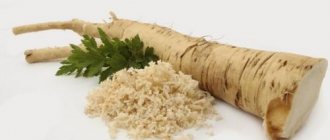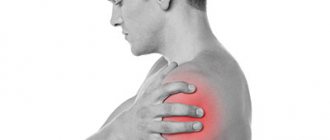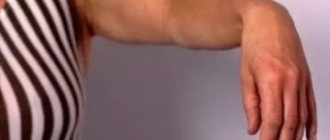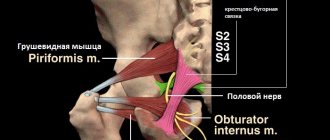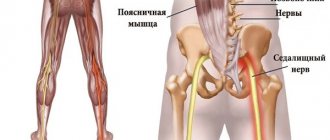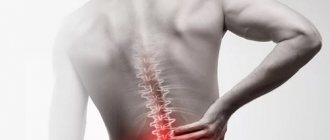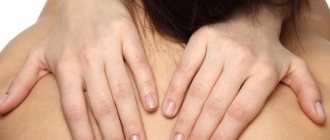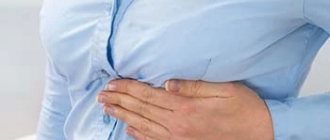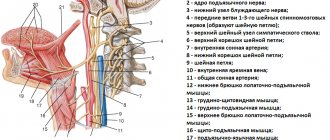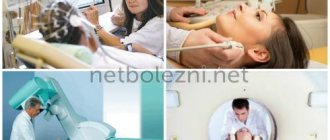The sensation of shooting pain between the ribs on the side will cause concern in any person. The first thing that comes under suspicion is the heart. But a disease such as intercostal neuralgia has a similar localization. To correctly diagnose pathology, it is important to know its causes and symptoms. What is included in the complex of treatment and prevention, read on.
What is intercostal neuralgia
Intercostal neuralgia (scientifically known as thoracalgia) is a pathology in which the roots or the entire length of the nerves located between the ribs are compressed and irritated. A person experiences severe chest pain. Very often, patients think that this pain is cardiac, since the discomfort is felt specifically in the heart area.
Middle-aged and elderly people suffer from the disease more often due to degenerative changes in the body, affecting nerve fibers. Also, tumors and inflammation of peripheral nerve trunks contribute to the manifestations of intercostal neuralgia. Women during pregnancy may also experience characteristic symptoms. This is caused by the expansion of the chest and abdominal muscles.
Factors in the development of pathology are:
- Injuries to the spine, ribs.
- Pinched nerves.
- Atherosclerosis and hypertension.
- Spinal diseases (osteochondrosis, scoliosis, hernias, disc protrusions, arthritis, osteoporosis, ankylosing spondylitis, tumors in the thoracic region).
- Diseases of the gastrointestinal tract (pancreatitis, ulcers).
- Lack of minerals and vitamins in the diet.
- Frequent stress.
- Local hypothermia.
- Diabetes.
- Prolonged and severe cough.
- Inflammation or excessive tension in the back muscles.
- Poisoning by poisons, drugs or microbial toxins.
- Injury to nerves located in the thoracic region.
Congenital malformations and spinal injuries, weak immunity, diseases of the cardiovascular system and bad habits create the preconditions for the development of intercostal neuralgia.
In the vast majority of cases, the disease occurs as a result of irritation or pinching of the nerve by the intercostal muscles.
In this state, a large number of impulses arrive at the nerve endings, a lack of oxygen appears, and as a result, severe pain.
Causes of pinched thoracic nerve
The main cause of compression is a structural disorder of the intervertebral tissue and displacement of the vertebrae. A pinched thoracic nerve can occur as a result of:
- spinal injuries;
- excessive physical stress on the back;
- intervertebral muscle sprains;
- for spinal tumors.
Predisposing factors to this pathology are:
- age-related changes;
- sedentary work and sedentary lifestyle;
- chronic illnesses;
- hypothermia.
Symptoms and diagnosis of intercostal neuralgia
The disease can be suspected first of all if:
- Acute pain.
- Burning sensation.
- Tingling.
- Back muscle tension.
The pain can be paroxysmal, excruciating, resemble pain in the heart, and radiate to the shoulder blade or epigastric region. It gets worse when coughing, sneezing or turning the body. A person is forced to take this body position in order to alleviate his condition. The duration of the condition is 4-7 days.
Some areas of the skin in the chest area may lose sensitivity or, on the contrary, be painful when touched.
Additional symptoms of intercostal neuralgia:
- Heavy sweating.
- Sharp fluctuations in blood pressure.
- Pain in the lumbar spine.
The main thing in diagnosing intercostal neuralgia is to differentiate its symptoms from life-threatening heart pain. Main differences:
- Heart pain is relieved with Nitroglycerin tablets.
- The pain in the heart radiates to the left shoulder or arm, and the person feels an arrhythmia.
- In case of heart disease, the pain is short-term, the sensation does not change with a deep breath.
Pain due to neuralgia intensifies when palpating the intercostal spaces, while bending or turning the body. Nitroglycerin does not help, but warmth and painkillers bring relief.
In some cases, it is important to exclude pneumonia, pleurisy and stomach ulcers.
The doctor makes a diagnosis based on the patient’s complaints and careful palpation of the ribs with spaces between them. In difficult cases, examination is indicated, for example:
- Computed tomography or MRI of the entire spinal column.
- X-ray of the spine and chest organs.
- Ultrasound of the heart and electrocardiogram for complaints of pain on the left (to rule out heart disease).
- Electroneurography for suspected nerve injury.
- Gastroscopy to exclude gastrointestinal pathologies.
Additionally, a general blood and urine test is prescribed to have an idea of the patient’s health status, the presence/absence of an infectious process, and kidney function.
Treatment of a pinched intercostal nerve at home
In most cases, treatment of intercostal nerve pinching is carried out at home on an outpatient basis. Patients with serious life-threatening complications are admitted to the hospital.
Treatment for a pinched intercostal nerve should begin by contacting an experienced vertebrologist or neurologist. These doctors will make an accurate diagnosis and prescribe effective and safe treatment. In Moscow, you can make an appointment with a neurologist or vertebrologist at our manual therapy clinic. The first appointment is completely free for all patients.
We offer to treat pinched intercostal nerve using affordable and effective techniques, including:
- manual traction of the spinal column, which allows you to quickly and without pharmacological drugs remove pressure from the nerve fiber and increase the intervertebral spaces;
- osteopathy – improves microcirculation of blood and lymphatic fluid, starts the process of regeneration of damaged nerve fiber;
- massage – improves the condition of muscles, ligaments and tendons;
- reflexology – with the help of acupuncture, the body’s hidden reserves are activated and the regeneration process is launched;
- physiotherapy – improves metabolism at the cellular level;
- Therapeutic gymnastics and kinesiotherapy restore the mobility of the human body.
The course of treatment is always developed individually. We invite you to sign up for a free initial consultation with a doctor right now.
Prevention
In order not to think about how to remove pinching in the thoracic spine, prevent pathology. Maintain good posture, keep your weight under control, lift weights correctly - do not bend over, but squat. If your work involves a computer or long periods of sitting at a desk, do exercises and breaks. In addition, you need to monitor your diet, adequate intake of vitamins and minerals, basic physical activity, and lead the healthiest lifestyle possible. In this case, it will be possible to maintain the health of the spine even in old age.
Treatment of intercostal neuralgia with a new drug - NANOPLAST forte therapeutic patch
In the therapeutic treatment of intercostal neuralgia, various drugs are used, such as NSAIDs, analgesics, etc. All of these drugs are effective, but with prolonged use they can cause harm to the body. Therefore, it is very important to minimize side effects and increase the effectiveness of treatment for intercostal neuralgia. A new generation drug can help with this - the pain-relieving anti-inflammatory medical patch NANOPLAST forte.
In the treatment of intercostal neuralgia, the therapeutic plaster NANOPLAST forte is highly effective, it relieves pain and inflammation, improves blood circulation in the affected area, and allows you to reduce the dose of painkillers and anti-inflammatory drugs.
For intercostal neuralgia, the therapeutic plaster NANOPLAST forte is applied to the intercostal area (avoiding the heart area) or to the projection of the exit of the spinal nerves, usually pinched due to osteochondrosis to the right or left of the spine in the thoracic region, depending on the location of the pain. It is possible to simultaneously use the patch in the intercostal area (where the pain is localized) and at the site of the projection of the corresponding nerve in the thoracic spine. It is usually recommended to use the patch in the morning for 12 hours, but it can also be used at night. The duration of the course of treatment of intercostal neuralgia with a therapeutic patch is from 9 days.
High efficiency, unique composition, long-term (up to 12 hours!) therapeutic effects, ease of use and affordable price make NANOPLAST forte the drug of choice in the treatment of intercostal neuralgia.
Read more about NANOPLAST forte
Pinching of the radial nerve in the arm. What is dangerous and how to treat it
Pinching of the radial nerve in the hand can occur in the following cases:
- as a result of injuries and bruises of the shoulder
- congenital anomalies of bone structures
- for fractures of the lower extremities and long-term use of crutches
- when you put your hand under your head while sleeping
- during surgical operations
- due to a tumor
- incorrectly given injection in the shoulder area
- past viral or bacterial diseases
- hypothermia
- stress
- alcohol or lead poisoning
Our doctors
Meet our specialists
Work experience 30 years Status Orthopedic traumatologist Qualification Doctor of the highest category
Donskoy E.O. Chief physician of the medical center "MEDICUS". Graduated from the First St. Petersburg State Medical University named after Academician I.P. Pavlov.
Work experience 12 years Status Vascular surgeon Qualification Doctor of the highest category
Nikitina O.A. Graduated from St. Petersburg State Medical University named after academician I.P. Pavlov. She completed an internship at the City Hospital of St. Great Martyr George.
Work experience 5 years Status Therapist Qualification Doctor
Nigai E.Yu. Works as a general practitioner at the Medical Center "Medicus". Conducts initial consultations with patients with various concomitant pathologies.
Work experience over 30 years Status Therapist Qualification Therapist
Danilchenko A.V. Conducts initial consultations with patients with various concomitant pathologies. Works as a therapist at the Medical Center "Medicus"
Work experience 15 years Status Orthopedic traumatologist Qualification Doctor of the highest category
Malofeev V.A. He is fluent in all the necessary methods of diagnosing and treating orthopedic pathologies and successfully restores patients.
Work experience over 30 years Status Nurse Qualification Nurse
Pugacheva O.N. Graduated from Leningrad Medical School. Works as a nurse.
Work experience 10 years Status Physiotherapy nurse Qualification Highest category
Murzakova A.Z. In 1981 she graduated from the Ufa Medical School. In 2012 - “Center for Advanced Training of Specialists No. 1”. Specialty: physiotherapy.
Work experience over 20 years Status Chiropractor Qualification Highest category
Azimov O.A. Specializes in the treatment of diseases of the joints and spine, rehabilitation after injuries and fractures. Works as a chiropractor at the Medical Center MEDICUS.
Work experience 4 years Status Nurse Qualification Junior nurse
Semenyuk E.B. Graduated from St. Petersburg Medical College No. 2. Works as a nurse at the Medical Center MEDICUS.
Work experience 30 years Status Nurse Qualification Highest qualification
Gadzhieva L.A. Graduated from Leningrad Medical School. Works as a senior nurse at the Medical Center MEDICUS.
Symptoms of a pinched nerve
- First of all, a person is tormented by severe pain in the hand, its sensitivity decreases. The hand and fingers bend with difficulty. Muscle weakness appears, or vice versa, muscle tension. Depending on the location of the pinched radial nerve, their characteristic signs are distinguished.
- Pinching in the armpit. In this case, the forearm, the back of the hand and the first three fingers are affected. Their sensitivity and motor function are impaired. Drop hand syndrome is observed.
- Pinched median nerve. Numbness occurs on the inside of the hand. The muscles of the thumb atrophy and it becomes immobile.
- Pinching in the area of the ulnar nerve. Pain occurs in the area of the shoulder and elbow. Pain occurs when moving the hand and squeezing the fingers. The forearm muscles weaken and lose their volume.
Treatment methods
Joint reconstruction
1 procedure per course FREE!
Introduction of organic serum with hyaluronic acid into the joint capsule. As a result, cartilage reconstruction occurs Read more…
Neuroprotective therapy
Discount -10%! Only 3 days!
Neuroprotectors are new generation drugs that can restore the conduction of impulses in nerve tissues. Read more…
Plasmacytopheresis
1 procedure for the course is FREE!
Treatment and healing of cartilage with growth factors. Restoration of joint tissue with purified platelet blood. Read more…
Transdermal therapy
Discount -25%! Only 3 days!
The introduction of titanium glycerosolvate into a diseased joint is a unique method of drug delivery without surgery or painful injections. Read more…
Ultraphonophoresis
Discount -25%! Only 3 days!
This is an innovative way to administer medications using ultrasound, which has the unique ability to loosen tissue. Read more…
EHF therapy
Discount -25%! Only 3 days!
This is a promising method of physiotherapy with a great future. In life, waves of this range do not reach the ground, being dispersed in the atmosphere. The device generates these waves itself. Read more…
Infusion therapy
Combinations of drugs for drip administration through a vein. High digestibility and rapid achievement of therapeutic action make infusion therapy Read more…
Blockade
1 procedure for the course is FREE!
A joint or spinal block is a way to quickly help a joint or back. In case of acute pain, the blockade helps to quickly relieve pain and help locally Read more…
Introduction of chondroprotectors
"HONDRO" in Latin means "cartilage" and that says it all. Injection of cartilage cells into damaged segments of the spine Read more...
Autohemotherapy
Treatment using the patient's autologous blood cells. Blood is administered intramuscularly, which provokes the body to intensify the fight against chronic infection, suppuration and trophic ulcers, the immune system is strengthened and effectively resists new infections. Read more…
Laser treatment
Infrared healing with a wavelength of 0.8-0.9 microns affects the internal source of the problem. This relieves inflammation, swelling and pain in the joint. Degenerative processes in the joint fade away as metabolic processes inside the joint accelerate many times. Read more…
Peloid therapy
Nutrition and growth of cartilage cells using peloid dressings. The base comes from Lake Sivash, where mud with a high concentration of Dunaliela Salina microalgae, which is rich in beta-carotene, is extracted.
Diagnostics
If this problem is not addressed to a specialist, the symptoms of pinching will intensify. And in rare cases, this can lead to tissue death in the hand. Therefore, it is important to take timely measures for diagnosis and treatment. To do this, you must first contact a diagnostic center, where the doctor will conduct a survey and a neurological examination in order to identify the location of the pinching and the reasons that caused it. And then he will prescribe a series of studies:
- blood and urine tests. Allows you to identify inflammatory processes in the body.
- X-ray of the spine and arm. It is carried out to identify joint pathologies.
- MRI of the injured arm, thoracic and cervical spine. Used to determine the location of pinching and the condition of tissues, vessels and joints in this area. As well as identifying possible tumors.
- electromyography. This method allows you to determine the degree of muscle damage.
Results of our patients BEFORE and AFTER treatment
Evgenia Semenovna, 67 years old.
Arthrosis of the knee, stage 3, was sent for joint replacement surgery. With the help of plasma, I coped with arthrosis in 3 sessions. Refused the cane. Avoided surgery. There is no pain, the cartilage and joint capsule have been restored. The duration of treatment is a week.
Pavel Ivanovich, 73 years old
Periarthrosis of the shoulder joint stage 2. I was treated by chiropractors, with leeches and needles - it didn’t help. The plasma caused the regeneration of lost tissue. Full mobility returned, chronic pain of 15 years went away. The treatment period is 10 days.
Natalya Igorevna, 59 years old
Osteochondrosis complicated by hernia formation. Excruciating back pain was relieved in one session. Neurological manifestations - goose bumps in the legs, numbness in the lower leg - disappeared after the second procedure. Course - 2 weeks.
Taisiya Romanovna, 82 years old
Arthrosis of the hip joint stage 3. The operation was refused due to his age and heavy weight. Plasmacytopheresis restored the joint capsule, restoration of articular cartilage and joint lubricating fluid production occurred. Course - 7 days.
Roman Stepanovich, 73 years old
Headaches, cervical osteochodrosis and vertebral hernias. As a result of treatment, headaches disappeared and pain in the cervical spine decreased. The pictures show restoration of the paravertebral tissues, reduction of the hernia.
Radial nerve entrapment treatment
After the examination and the data obtained from it, the doctor prescribes treatment. It depends on the patient’s condition, the location and degree of pinching and the causes that caused it. Treatment can be conservative or surgical. The conservative treatment method is aimed at relieving the patient of pain symptoms and restoring the damaged area. This method includes: taking medications (anti-inflammatory, painkillers, antispasmodics, B vitamins, diuretics, chondroprotectors), blockades, physiotherapy, massage, acupuncture, physical therapy. If a fracture occurs as a result of a nerve rupture, then in this case a surgical operation is performed to stitch it together. Surgery is also used to remove tumors.
At the MEDICUS clinic, experienced specialists will help you navigate the choice of diagnostic methods to detect pinched radial nerve and prescribe the most effective treatment that is suitable for you. You can make an appointment with a doctor through our website or by calling 986-66-36.
